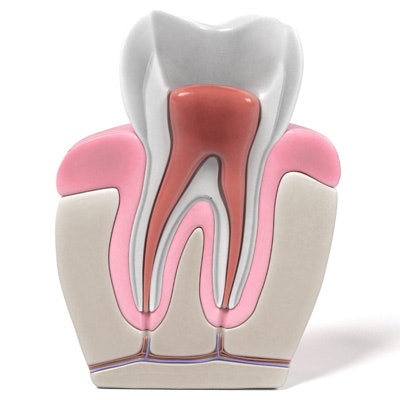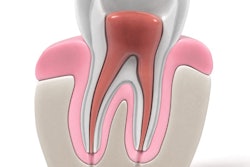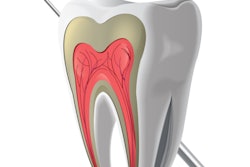
Do rotary or reciprocating instruments produce less pain for patients after endodontic treatment? The results of previous research have not produced a clear winner. Therefore, the authors of a new study performed a meta-analysis of randomized clinical trials to provide a definitive answer.
Practitioners seek to find the most efficient root canal treatment with the least pain for the patient. After a comprehensive literature search, the researchers found a difference in patient pain incidence between the instrument types.
"Our results suggest that rotary instruments yield lower overall postendodontic pain incidence than reciprocating instruments in single-visit canal preparation patients," wrote lead author Xiao-Mei Hou and colleagues (BMC Oral Health, May 25, 2017).
The researchers are affiliated with the Second Dental Center at Peking University School and Hospital of Stomatology and the department of endodontics at Capital Medical University School of Stomatology, both in Beijing.
Going head to head
Pain can occur within a few hours or days after endodontic treatment, with the incidence ranging from 13% to 65%, according to previous studies. Incidence of pain can vary based on factors including the selection of patients, apical periodontitis diagnosis, and experience of the dentist. Pain intensity within 72 hours of endodontic treatment typically ranges from 5 to 44 on the visual analog scale, which is represented as a continuous line with numbers from 1 to 100 and higher scores meaning higher levels of pain.
The mechanism of postendodontic pain remains unclear and is thought to be influenced by numerous factors, including female sex, pulpal and periradicular status, tooth type, preoperative pain, extrusion of irrigation solutions and apical debris, and instrument choice.
“Our results suggest that rotary instruments yield lower overall postendodontic pain incidence than reciprocating instruments in single-visit canal preparation patients.”
A 2014 study in the International Endodontic Journal found that continuous rotary instrumentation reduced apical extrusion of debris, lowering the level of postoperative pain compared with reciprocal instruments, although another study in 2015 in Clinical Oral Investigations found less pain with reciprocal compared with rotary instrumentation. However, a different study published in 2014 in the Journal of Endodontics found that single-file reciprocating systems and continuous rotary systems had similar levels of effectiveness at reducing endotoxins and cultivable bacteria from primarily infected root canals.
The researchers conducted the current meta-analysis to conclusively compare postoperative pain incidence and levels after a single-visit root canal done with rotary or reciprocating instruments. They searched medical databases for prospective randomized controlled clinical trials published before April 20, 2016, in English that evaluated pain using the visual analog scale following single-visit root canal treatment with both types of instruments.
For their final meta-analysis, the researchers ended up with only three studies, each of which they assessed as having a low risk of bias. The studies reported results for 1,317 patients, of which 659 were treated with reciprocating instruments and 658 with rotary instruments. Patients used 400 mg of ibuprofen in two studies for pain relief, while analgesics usage was unclear in the third study.
Postendodontic treatment pain was reported in 139 patients (21%) treated with reciprocating instruments and 172 (26%) treated with rotary instruments. However, the postoperative pain incidence odds ratio was 1.27 in favor of rotary instruments, indicating a lower pain incidence with rotary.
"Clearly, the incidence of postendodontic pain was lower in patients treated with rotary instruments than reciprocating instruments, perhaps because rotary instruments reduced debris extrusion, which decreases the irritation and minimizes inflammation and the release of chemical substances," they wrote.
Two of the studies included data on pain levels. Analysis of the data indicated that the incidence of mild postoperative pain was higher with reciprocating instruments, while moderate and severe pain incidence was lower with rotary instruments. Different study and instrument design could explain this, the authors wrote. Taper, tip type, flexibility, alloy type, number of files used, kinematics, and cutting efficacy are among the factors that varied between the studies included in the meta-analysis.
Further study needed
The authors noted that their study had a number of limitations, some of which are typical of meta-analyses:
- Homogeneity of patients
- Inconsistent instrumentation protocols
- Use of different file sizes and tapers
- Evaluation of postendodontic pain at varying time points, although one week of follow-up was the most common
- Subjectivity of the visual analog scale
- Difficulty of pooling data on analgesic frequency and dose, which might have -provided additional information
- Applicability of the results only to patients being treated at a single visit
The authors recommended that future studies consider and avoid these limitations.
"This meta-analysis indicates that the use of rotary instruments in canal preparation is associated with a lower incidence of postendodontic pain than reciprocating instruments," they concluded.



















